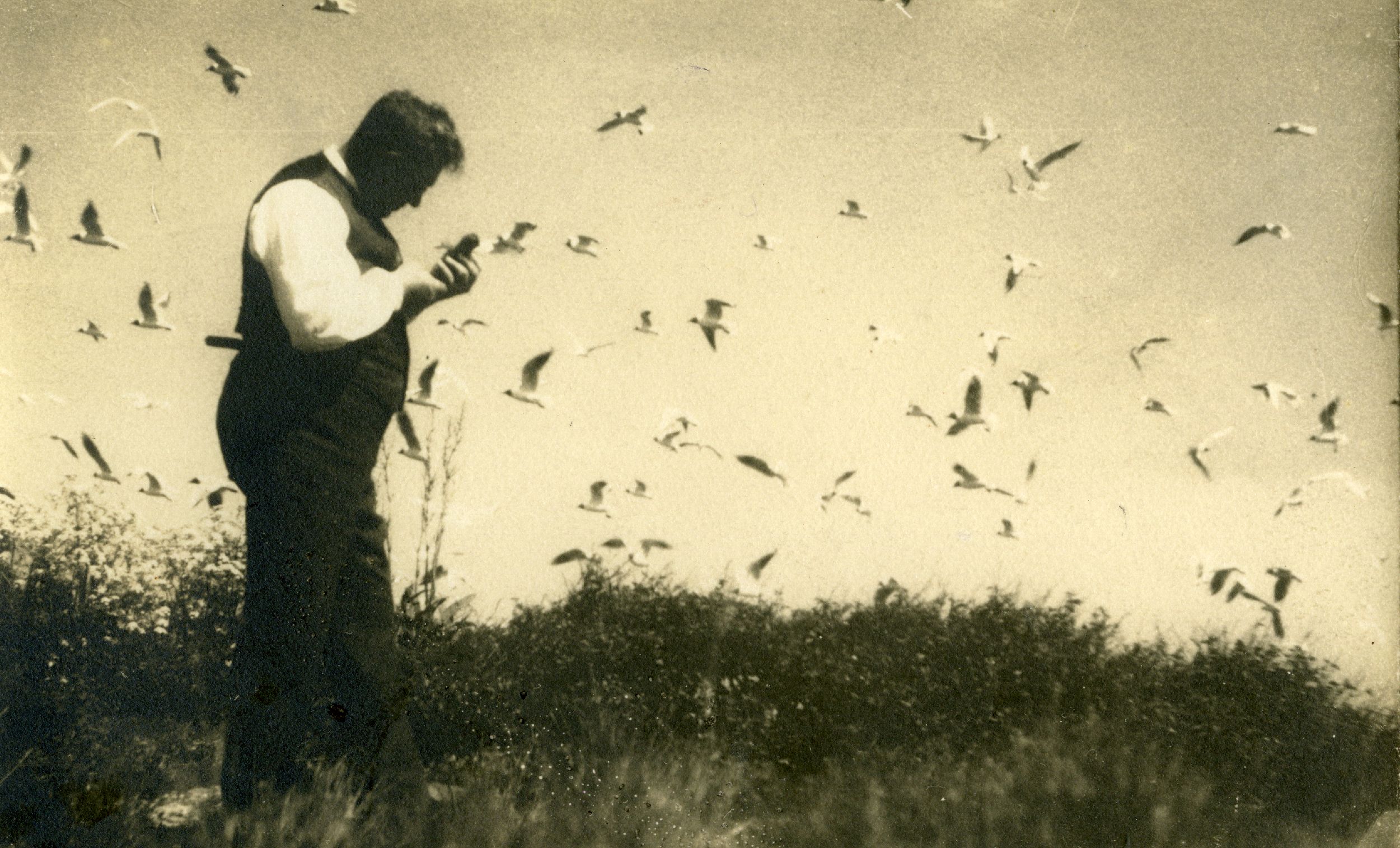The development of protected areas in Estonia began on August 14, 1910, when on the private initiative of the local lighthouse manager Artur Toom the Riga Society of Nature Explorers declared the Vaika Islands (currently Vilsandi National Park) a wildlife conservation reserve. This event laid the foundation for the history of Estonian protected areas.
The Nature Conservation Committee of the Society of Nature Explorers of the University of Tartu started to work on the creation of protected areas since 1920 and started to draft a new law protecting nature conservation. However, because of mainly economic reasons the law drafted in 1929 was shelved for several years.

Artur Toom. Photo: Saaremaa Muuseum SA, SM F 3761:11 F
In 1935, the issue of adopting a nature conservation act became acute again. On the initiative of State Parks Authority and the Ministry of Education, the first nature conservation act was adopted on December 11, 1935. All protected areas and protected objects were entered in the nature conservation register. In the then nature conservation register that was launched on November 11, 1936 and was shut down on February 22, 1941, had a total of 523 nature sites (in addition to some 26 protected species), 47 protected areas and 476 individual sites. A large part of these objects are also currently under protection, for example, the Tamme-Lauri oak-tree in the Võru County, Näärikivid in Lääne County, etc.
After World War II, a new nature conservation act was adopted in 1957 and four state locally managed protected areas (Vaika, Viidumäe, Matsalu, Nigula) and 28 other protected areas were established by the government decree.
Thanks to the enthusiastic work, Estonia achieved a relatively good level of nature conservation in the 1970s. Accepted internationally recognized principles in the field of nature conservation and organization, and cooperated with the world's largest nature conservation organizations as far as possible: the World Conservation Union (IUCN), the Human and Biosphere Program (MAB) and others. The National Red Book was also prepared.
After Estonia regained independence in 1991, the country’s nature conservation system was restructured.
In 1993, the Soomaa and Karula national parks were established and the Vilsandi nature reserve was expanded and redesignated as a national park. Estonia joined the Berne, CITES and Ramsar Conventions.
In 1994, two more large conservation areas were established - the Alam-Pedja Nature Reserve and the Naissaare Nature Park. Estonia joined the most important nature conservation framework agreement – the Convention on Biological Diversity. The Protected Natural Sites Act was also adopted.
In 2004, Estonia became a member of the European Union and on May 10 adopted a new nature conservation act, which introduced the designation "conservation area" as the term of a new protected area. The network of protected nature reserves in place in Estonia was supplemented and harmonized with the European Union's Natura 2000 network under the Birds and Habitats Directives. In the same year, the Matsalu Nature Reserve was re-designated as a national park.